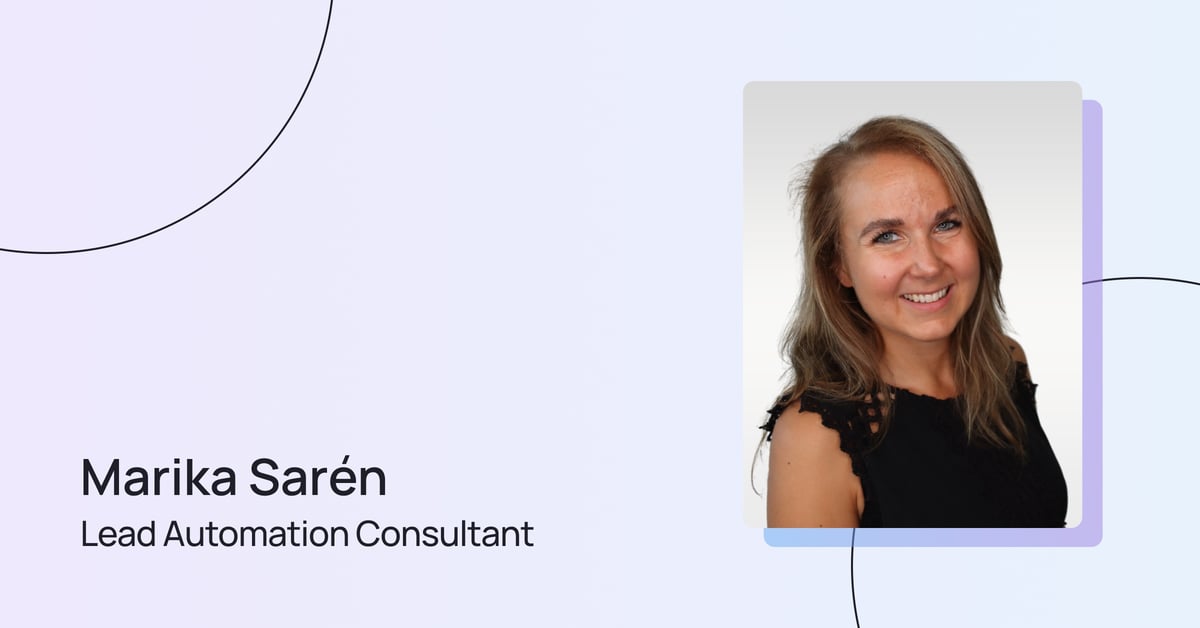We’re big fans of education here at Ultimate. So when we were asked by our friends at the CDI Foundation to deliver a workshop at their annual Conversation Design Festival, we jumped at the chance. This year, it was all about Making AI Speak Human.
Ultimate was just one of the guest speakers in a powerful lineup including tech giant Microsoft and leading CRM platform Salesforce. During this insightful full-day event, the expert speakers covered topics spanning AI inclusivity, ways of visualizing conversation journeys, how to supervise generative AI models, and much more.
As part of a jam-packed day of workshops, hackathons, and talks, Marika Sarén — one of our talented Lead Automation Consultants — gave a masterclass in how to design better, more human-centric bot conversation flows. To share her expertise even further, we’ll take you through the highlights.
What makes a bad bot experience?
To kick things off and get the audience engaged, Marika asked participants to test out the conversational experience with 2 different chat widgets. After giving everyone time to play around with these bots, the group came back together to discuss the factors that lead to frustrating automated interactions.
Here are the biggest bugbears they came up with:
- Bots misunderstanding: We’ve all been there — when you type a question into a chat widget and receive a totally unrelated answer. Frustrating, right?
- Poor conversational experience: Or when you have a simple query and the reply you get is a long list of instructions that are impossible to follow, written in a tone of voice that jars with the identity of this brand you know and love (or used to love)
- No resolution within the chat: Simple bots aren’t able to perform functions, so even if they understand your issue, you might just be directed to a help center article — whereas the best AI-powered virtual agents can use integrations to carry out actions and fully resolve issues within the chat, just like a human agent
- No resolution at all: And — most frustratingly — when you come to a customer service bot with a problem, and leave the chat with no resolution at all
Understanding the pitfalls behind frustrating chatbot experiences makes it easier to avoid these issues when designing automated conversation flows.
Choose your own adventure
Next up, Marika led the group through a choose-your-own-adventure exercise in designing bot personas. There are a few things to consider when deciding on the persona for a virtual agent, Marika explained, including:
- A company’s brand identity
- The right tone of voice to match this identity
- Who the brand’s ideal customer would be
- And how these customers might communicate with one another
If you’re a health tech company offering advice on sensitive medical issues, you’ll want your virtual agent to use a very different tone to an online retail brand selling streetwear.
Want more pro tips on designing conversation flows?
After this, the group went on to select personality traits for their virtual agent. But deciding on a bot persona (complete with its own characteristics and a predefined tone of voice) isn’t just for fun. Outlining this in advance helps guide conversation designers when creating each dialogue flow.
Which is exactly what came next. Based on their bot’s persona, the participants thought about how the virtual agent would communicate in certain situations — like greeting a customer when they first enter the chat, acknowledging a question, responding to an issue, and saying goodbye.
Brain training for bots
Shifting away from the virtual agent’s persona, Marika went into the importance of setting up a robust training program for your bot.
Behind every joyful automated experience is a healthy AI model. We can think of the AI model as a bot’s brain, Marika explained. And the only way to keep your AI model healthy is with regular training — kind of like those brain teaser exercises designed to keep our human minds sharp.
Training your AI model on real customer messages helps strengthen your bot’s ability to respond confidently to customer queries. There’s no single correct way of asking “where is my order” for instance. You might write “I haven’t received my package yet” or “my order is late” — and once you add in typos or slang, the variations are suddenly even higher.
The more data (or expressions) an AI model is trained on, the more confident (meaning the more accurate) a bot will be when replying to customers.
To wrap things up
Bringing all of these learnings together, Marika shared a real example from global marketing automation platform ActiveCampaign, one of the leading brands we work with. To make their product more secure, ActiveCampaign started to roll out email verification when users logged in from an unknown IP address.
Knowing this would be disruptive and impact on the customer experience, ActiveCampaign’s support team added proactive messaging to their bot’s existing intent for “account login issues.” This new branch within the dialogue asked customers if they had received a verification code, and guided them through the process of account recovery.
With just 10-minutes’ effort redesigning one conversation flow, the support team was able to deflect 24% of chat volumes for this issue. It allowed customers to self-serve, while providing support to those who needed a little extra help. And this created a seamless experience in what could have been a frustrating new situation for customers.
Sadly, this was all Marika had time for! As well as demonstrating the real value of thoughtful conversation design, she guided participants through a fun and interactive workshop — filled with tips, tricks, and best practices for creating the most engaging automated conversation flows.
